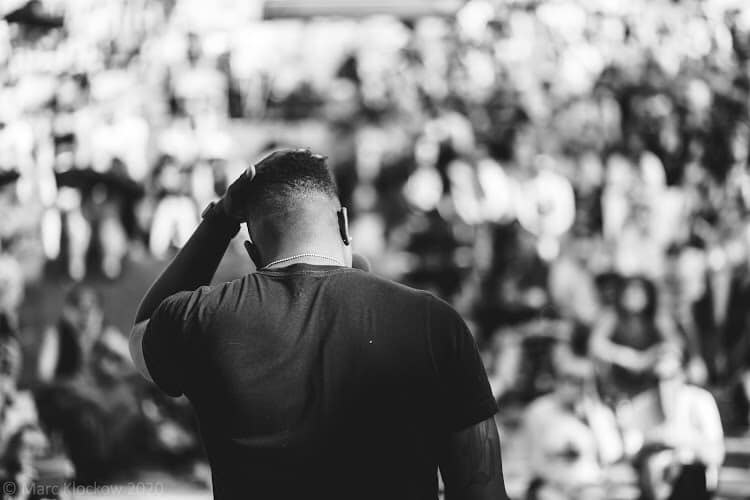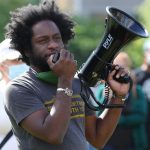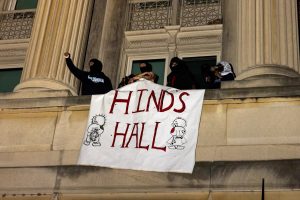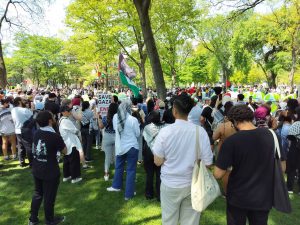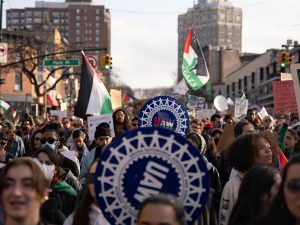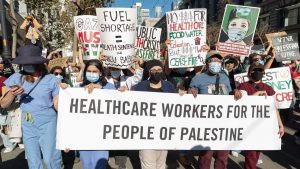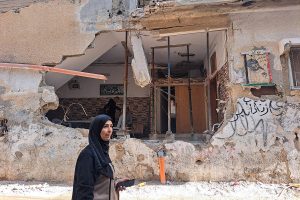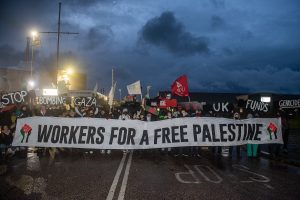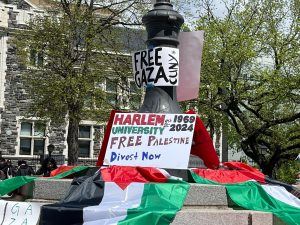The current movement against racism and police violence has sustained itself for weeks because in each city it has taken on a life of its own. It is not just solidarity mobilizations for justice for George Floyd and the protests in Minneapolis. It is a movement sitting atop hundreds of years of racist terror and capitalism, and exploding within the context of the ongoing triple crises of the Covid-19 pandemic, the economic slump, and police brutality. This process is unfolding in ways particular to different cities and local contexts.
In Detroit, like in many cities, the movement has been on the streets every day since it began. But, perhaps unlike other cities, there has been a radicalization through self-organization. This may not be surprising given its history as a place that fights back since the labor movement of the ‘30s, to the 1967 uprising and the formation of Black worker organizations such as the Dodge Revolutionary Union Movement and the League of Revolutionary Black Workers, to the more recent fights for clean water and against evictions. Regardless of reason, the organizational structures built in Detroit strengthen the movement, radicalize demands, and can lead to the construction of a communist nucleus in the majority Black city.
What does the organizing look like?
Before each day’s march, there is an open mic rally. It is in these assemblies, made up of existing groups as well as unaffiliated individuals, that discusses and sets the agenda for the movement each day. Of course this idea is not original, but a phenomenon that appears when the masses awaken.
Using this model, the movement faced down riot police by showing up night after night and defying the curfew. When Mayor Duggan took a different tack and tried to co-opt the energy from the streets by organizing a meeting with movement leaders, the assembly took on new importance. It wrote 24 demands — 11 of which specifically addressed the Mayor and Chief of Police. The assembly further voted on how the elected delegates would represent the movement. Delegates were not authorized to make decisions without consultation of the larger body and are bound to the decisions of the group. As such, the assembly becomes a counterweight to possible backroom deals or the otherwise moderating pressures from the administration.
From these assemblies has also been founded an organization, Detroit Will Breathe, which takes on the organizing between the daily meetings and gives political leadership with hundreds participating through various communication platforms. This organization was forged in the heat of the struggle, as the masses rejected one attempt after another to call off the protests, intimidate people off the streets, and take away its militancy. As such, it is an organization premised on the basis of maintaining and expanding the power of the radicalizing movement.
What has been done?
Ending the curfew.
As a response to the militancy and determination of the protests across the country, local governments — many led by Democrats — implemented what seemed to be a national policy of intense repression. In some areas the National Guard was deployed, and many cities saw curfews imposed. Detroit instituted one such curfew on Sunday, May 31, and used brutal police violence to enforce it in an effort to split the movement between moderates and militants. On Tuesday, June 2, however, the daily action stood united against the curfew. Over two hundred people stood shoulder to shoulder, marching over 5 miles into the neighborhoods to defy the highly militarized Detroit Police Department. The standoff ended with over a hundred arrested, including one author of this article. This clear and undisputed illustration of repression inspired twice as many to challenge the curfew the next day. From then on, Police Chief Craig backed off enforcing the curfew until it officially ended the next week.
Fighting facial recognition.
In an action that showed off the dynamism of the movement in Detroit, a short-notice car caravan was organized against a last-minute item added to the City Council agenda: a proposal to renew the contract for the use of facial recognition technology in the city. Just the announcement of the caravan protest forced Mayor Duggan to pull the item from the agenda, though 40 cars were still mobilized to visit the homes of City Council members who attended the meeting virtually. Hundreds logged into the meeting heard council members express their “outrage” with the caravan. In truth, the council members were expressing for the first time in a long time their fear of the masses in action.
Public Tribunal Against Police Brutality.
During one of the daily marches, the protestors stopped by the area where the Algiers Hotel once stood, a key site of the 1967 Detroit uprising. There, former members of the League of Revolutionary Black Workers spoke of their experiences and expressed to the crowd the need to remain militant and on the streets. As revolutionary continuity was established and the torch passed on, a strategic political tactic was passed along as well: the public tribunal.
The tribunal was re-fashioned to meet the needs of today. In 1967, a mock court had been created, with a judge, jury, prosecutor and defense attorneys present in full theatrical display. The public tribunal staged by Detroit Will Breathe was not a court trial, which organizers realized silences the voice of the oppressed and imposes injustice. Instead of emulating a flawed institution, the public tribunal was a public “hearing” where the voices of the oppressed and victims of police violence could speak about their experiences and tell the truth without hostility or interruption.
During the videos and testimonies of the tribunal, DPD announced that one police officer had been suspended and 11 incidents are under investigation for excessive force against protestors. This quick response showed the effectiveness of this tactic. In the end, the tribunal voted to demand City Council and Mayor Duggan drop the charges against all protestors, defund and demilitarize DPD, and conduct a formal investigation into DPD’s use of excessive force against protestors.
Interventions of labor.
The most consistent labor presence has been from the Detroit Federation of Teachers, with two union caucuses and rank and file members supporting the demand to remove police from the Detroit Public Community School District. This is a particularly vital demand since the school district has its own deputized police force. A contingent of dozens of International Brotherhood of Electrical Workers (IBEW) members have also joined the protests as well. Just as important has been the active participation of working-class youth, some in unions, but most not, in the daily mobilizations and in the leadership of the movement. The assemblies have acted as the organized “tribune of the people,” giving sectors of the working-class and specially oppressed an avenue to participate and shape struggle on a democratic and organized basis. But if these assemblies were to start occurring within the workplace, and not outside them, they could play a central role in organizing for strikes and mobilizations, and augment the movement with the might of labor. As a start, the involved caucasus could push their unions for assemblies.
The protests demonstrate the need for revolutionary organization.
In Detroit, a city marked by extreme segregation and stratification between white and Black residents and the surrounding suburbs, these struggles have awakened people to systemic inequality and the power of social struggles in addressing these inequalities. Many on the streets seek real and deep changes that capitalism, frankly, cannot provide.
So many of those attending these protests looked to Bernie Sanders as a candidate for change. Yet the Democratic Party establishment united their forces to beat Bernie Sanders, and Sanders simply bowed down before the Democrats’ centrist candidate Joe Biden, refusing to build the type of independent movement he argued was so desperately needed. Sanders’ rejection of the movement’s demand to defund the police — in fact he believes they should get a raise — illustrates why Sanders fails to be a real leader of the working-class and specially oppressed. This is why working class youth are taking up the task of building that independent movement.
It is in this context that a revolutionary perspective must be put forward that facilitates the overall radicalization of the movement and the creation of revolutionary cadre. While the iron is hot, while minds are opening up to the reality and nature of oppression and inequality, revolutionaries must strike in order not to miss the window while it is open.


